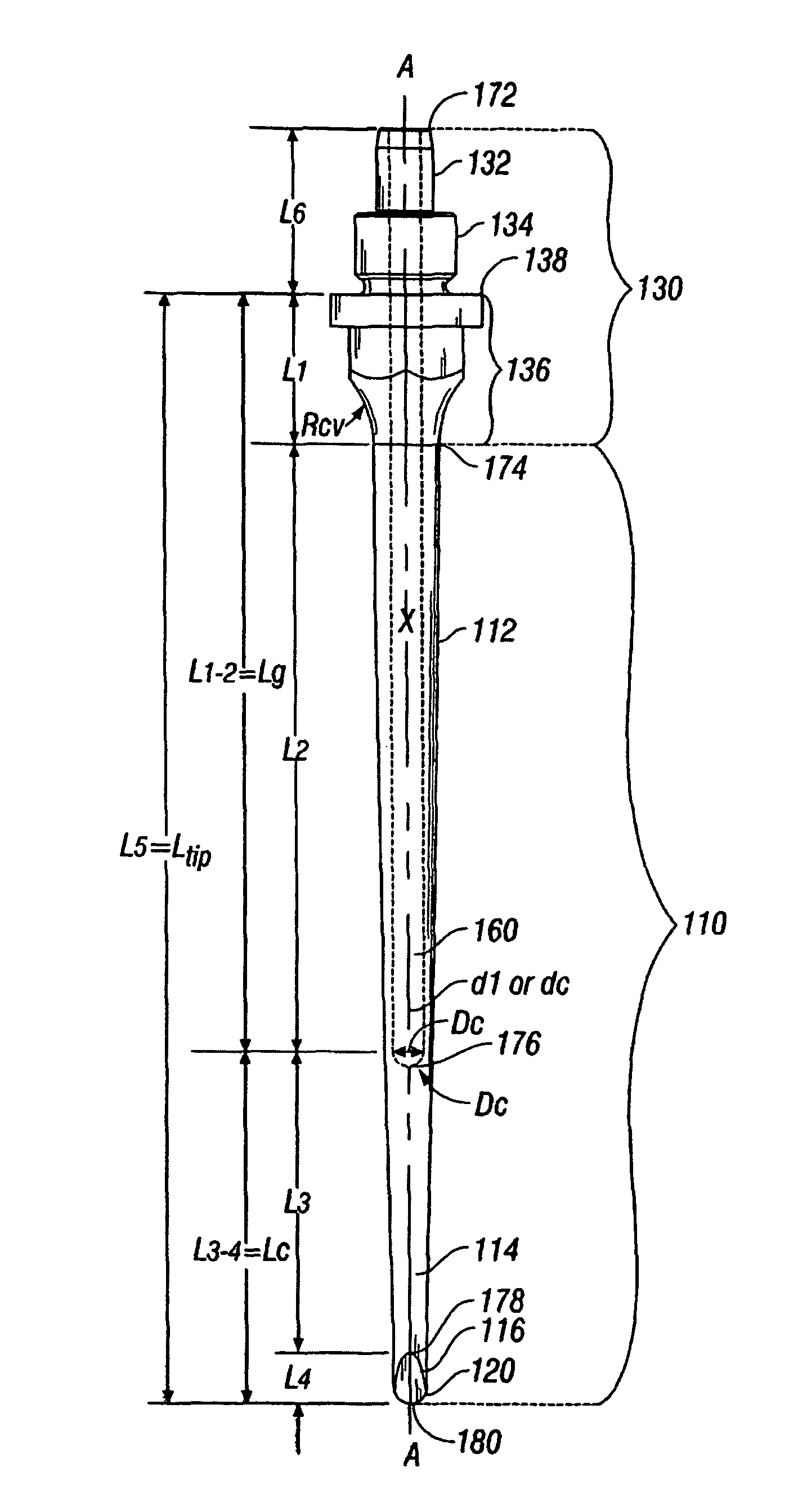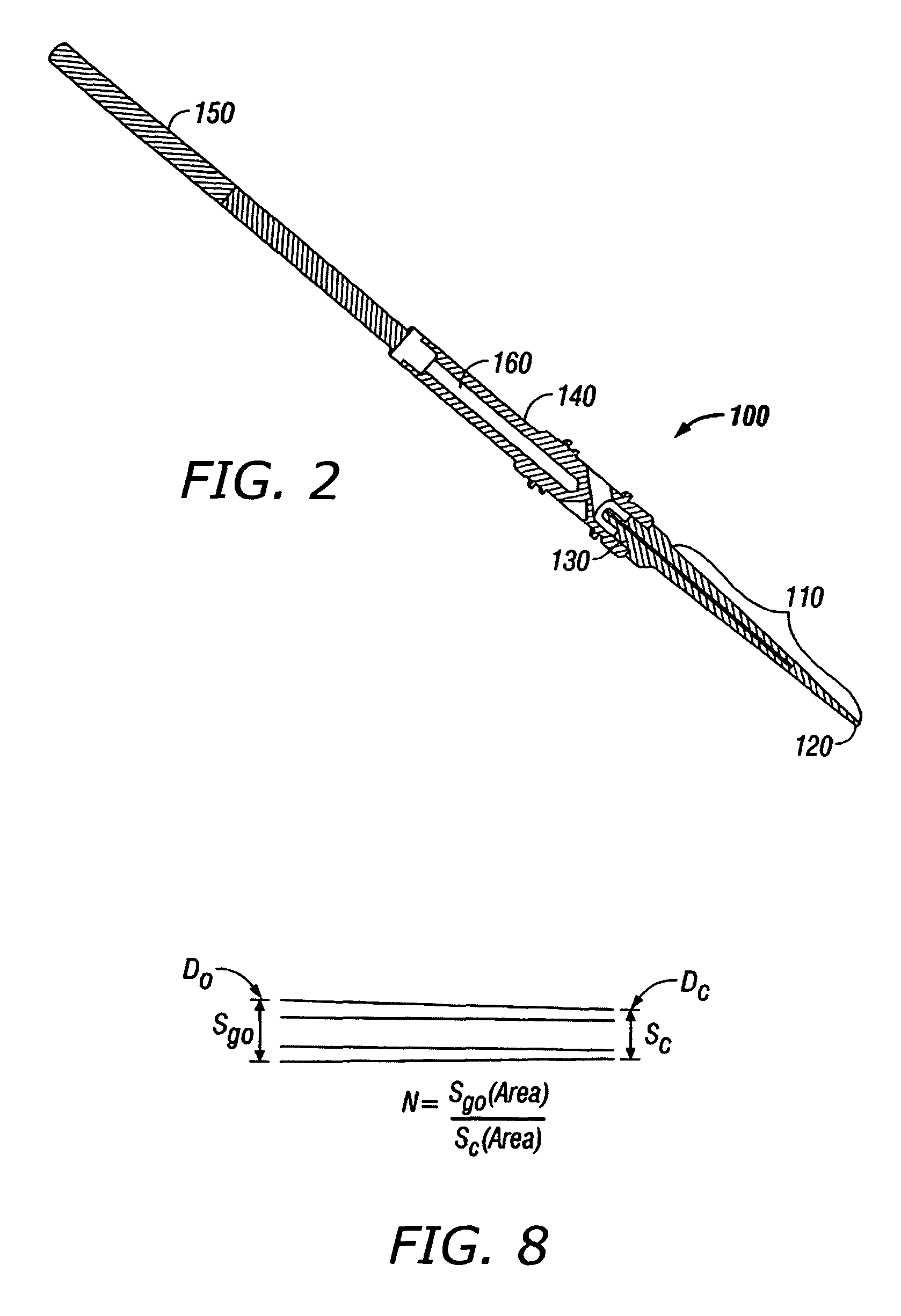Ultrasonic horn for removal of hard tissue
a technology of ultrasonic horns and hard tissue, which is applied in the field of ultrasonic horns, can solve the problems of limited ultrasonic frequency, bone, and inability to achieve the desired effect of breaking up certain types of body tissue, and achieve the effect of limiting transmitted sound and reducing horn stroke amplitud
- Summary
- Abstract
- Description
- Claims
- Application Information
AI Technical Summary
Benefits of technology
Problems solved by technology
Method used
Image
Examples
example
[0104]In one embodiment of horn 100, as indicated in FIG. 15, a 23 kHz resonant frequency titanium tip lead 120 of the profile discussed was developed to match the design frequency fi of the existing CUSA™ transducer. FIG. 15 illustrates the benefits of being able to transfer models to automated contouring machine practices, wherein the results of modeling of the area function of the Gaussian and associated outside diameters, D, and internal hole diameters, d, are provided. In particular, the following diameters are shown in FIG. 15 and in the associated table of data: (a) DgO is the outer diameter of elongated member 110 along hollow portion 112, which varies as a function of x, in inches; (b) dg is inner diameter of hollow portion 112 of elongated member 110 and is substantially constant.
[0105]A particular benefit of the mathematical approach to the profile, which includes the wall defined by the Gaussian and channel, the decaying exponential solid, and tangent function of the chi...
PUM
 Login to View More
Login to View More Abstract
Description
Claims
Application Information
 Login to View More
Login to View More - R&D
- Intellectual Property
- Life Sciences
- Materials
- Tech Scout
- Unparalleled Data Quality
- Higher Quality Content
- 60% Fewer Hallucinations
Browse by: Latest US Patents, China's latest patents, Technical Efficacy Thesaurus, Application Domain, Technology Topic, Popular Technical Reports.
© 2025 PatSnap. All rights reserved.Legal|Privacy policy|Modern Slavery Act Transparency Statement|Sitemap|About US| Contact US: help@patsnap.com



